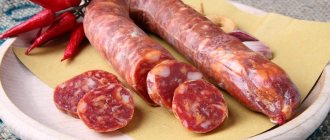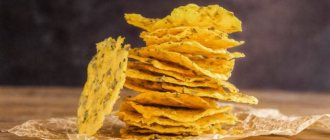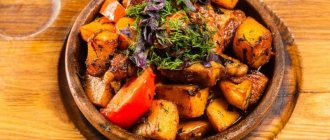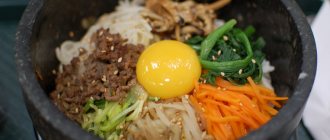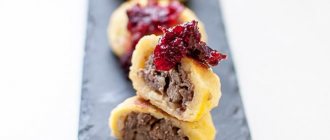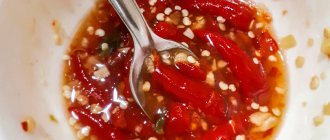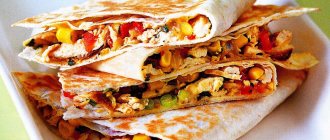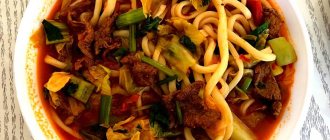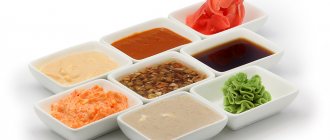The principle of cooking in a tagine
The invention of the tagine was largely due to the arid climate of their country and the shortage of fresh water in Morocco. Here, as they say, there would be no happiness, but misfortune helped. To prepare wonderful dishes in a tagine, a minimal amount of water is required. The dome-shaped lid catches the fragrant steam, which cools and then drops back into the pot.
Thanks to the principle of steam circulation, Moroccans and Algerians manage to create real culinary masterpieces - not a single note of taste and aroma leaves the treasured pot! Of course, it is important to add that food in a tagine is cooked exclusively over low heat.
Can tagine be used on the stove and in the oven?
Any variety of tagines are suitable for cooking on stoves at home. When using them, you must follow a number of rules:
- to combine a gas stove and ceramic cookware, it is necessary to use a flame divider so that the bottom is heated evenly;
- all metal products on gas stoves are used without additional equipment;
- when choosing cookware for induction kitchen appliances, it is better to choose a cast iron or stainless steel tagine, but you can also use other varieties by installing them on a steel disk;
- glass-ceramic hobs allow the use of any type of product;
- For an electric stove, it is better to choose a product with a bottom size that matches the diameter of the burner.
Metal models are more often used in the oven. For simple baking of food, the bottom part without a lid is suitable. A closed tagine, when placed in the oven, works almost the same as on the stove, excluding the process of steam condensation and moisture draining into the pan. The purpose of the lid is to retain the temperature and steam inside the space underneath. Tagine replaces the oven.
What is cooked in tagines?
National Moroccan and Algerian stews based on chopped meat, poultry, fish, vegetables and fruits.
Raisins, cinnamon, nuts and light honey are added to almost any tagine. Yes, combining sweet and sour flavors with meat in Moroccan and Algerian dishes is quite popular. For example, a real hit is lamb cooked in tagine with dates. Well, and, of course, you can’t do without spices: ginger, cumin, turmeric, saffron. A magical combination of the finest shades.
There is something to please vegetarians too
– amazing stewed vegetable dishes can be created in this miracle pot. At the same time, when cooked, each vegetable will retain its own unique taste. By the way, vegetable tagines are usually prepared more spicy and piquant than meat ones. Therefore, chili and paprika are generously added to them.
Moroccans also add a special spice to their tagines - Raz el Hanout. Its name is translated from Arabic as “head of the store,” that is, the most important spice. To prepare it, use cinnamon, sesame, ground ginger, pepper, nutmeg, coriander, cloves, cardamom and other ingredients (each cook may have his own recipe).
There is also a Tunisian tagine. But the dish that is prepared in Tunisia is more reminiscent of an Italian frittata or omelette. It always contains eggs, to which a generous amount of various ingredients is also added. They especially love cheese, meat and roasted peppers.
Traditionally, tagines are cooked over smoldering coals. But delicious tagine dishes can be prepared at home - on an electric or gas stove. Of course, tagines for home use are somewhat different from classic clay tagines. As a rule, they have a cast iron base. But the cooking principle remains the same, so the dishes always turn out delicious.
Tazhin is also full of color and an authentic atmosphere! It is not only a utensil for cooking, but also a beautiful, original way of serving dishes. The dish is not transferred; it is brought to guests directly in the pot. Participants in the meal gather around the tagine and eat from it, each from their side. Instead of cutlery, they use fresh Moroccan bread, which is dipped in a thick, rich sauce. Agree, there is something to surprise guests!
What are tagines made from?
Nowadays there are different models of Moroccan frying pans on sale, made from traditional and modern materials. The dishes can be used for cooking at home, and you can also use coals by lighting a fire in a barbecue or oven with removable disks.
Clay and ceramics
The peculiarity of unglazed ceramics is the ability of its surfaces to absorb part of the steam, and during the cooking process, release it to the space under the lid. The disadvantages of porous unglazed terracotta are related to the ability to absorb moisture:
- in a humid environment, microorganisms or mold quickly develop, so before storing washed parts, dry them well;
- The container absorbs foreign odors and retains them for a long time.
Glazed ceramic products do not have these disadvantages. A layer of glaze covers all pores with a glassy mass. A ceramic container with a shiny glaze is easier to clean and does not retain the smell of food.
Both ceramics and terracotta have common disadvantages. Dishes do not withstand heat on a gas stove and may crack due to sudden temperature changes. Such cookware is also not suitable for an induction cooker: when using it, you need to place a steel adapter disc under the bottom. When choosing ceramic products, you need to carefully study the manufacturers' recommendations for using cookware. In addition, the containers are quite heavy and fragile.
Cast iron
A more modern material is iron alloy. Cast iron cookware is bulky, but it is suitable for any type of stove and cooking over coals. Without the lid, the bottom can easily be used as a simple frying pan. A number of manufacturers produce such a product as a cast iron tagine with a ceramic lid.
Modern models of Moroccan frying pans are made with non-stick coatings. This allows you to avoid complicated washing after use, drying before storage and allows you to use a minimum amount of fat when preparing dishes without a special lid.
Cast aluminum
The heat capacity of aluminum is slightly lower than that of cast iron and ceramic products. The main advantage of such a tagine is its lighter weight. Like a cast iron base, an aluminum frying pan can be coated with a non-stick layer or heat-resistant enamel. Such products are easy to wash and do not absorb odors.
It is difficult to cast a cap of the correct shape from aluminum, so most products are produced with ceramic caps. It is convenient to cook any fried dishes or bake them in the oven in a frying pan without a top. The convenience of any metal cookware is that it is suitable for almost all types of stoves. Aluminum is not just for induction appliances. Light metal cookware can only be placed on a steel disk, otherwise the stove will not turn on.
Stainless steel
Stainless steel tagines are considered not a very good type of product due to the thin walls and bottom of the container. It is convenient to fry and bake in such a frying pan, but using a thin-walled item for its intended purpose is not always practical. A thin container will allow you to cook a dish well only if you maintain a constant temperature: on modern electric stoves with thermostats (simple or induction). On gas, food may burn if the pan overheats.
Steel containers are made with or without non-stick coating. Steel does not absorb odors, so the main advantage of the coating is the ease of washing off food residues after cooking. Most models also have a special insert that allows you to steam cook.
When choosing a stainless container, you should pay attention to the technical characteristics of the product. To better retain heat, a number of manufacturers make the bottom double or multi-layered by placing a thick aluminum insert in the pan. Such models can be used for simple frying, but are also well suited as utensils for long-simmering dishes.
Tagine recipes
Recipe: Lamb in Moroccan tagine
The wonderful combination of spicy lamb meat with tender stewed vegetables can make the heart of every gourmet beat fast.
Lamb tagine dishes can be simmered on the stove and then reheated over open air and charcoal. The vegetables are carefully and artistically placed around the lamb in a conical manner, completely hiding the meat and making it the secret center of the culinary work. The dish looks beautiful and appetizing.
The recipe below includes seasonings that are ideal when using potatoes as the dominant ingredient. Vegetables add bright flavor accents and visual color. Canned lemons and olives will add real sophisticated gourmet chic to the dish - these are the classic ingredients of this recipe. But you don't have to use them if they don't suit your taste preferences or you simply don't have them on hand. However, in this case it is recommended to add a little more salt!
What you will need |
Main ingredients:
- 0.5 kg lamb, cut into large pieces,
- 4 tbsp. spoons of olive oil,
- 1 onion, chopped into rings,
- 1 onion, finely chopped,
- 3-4 cloves garlic (finely chopped or pressed)
- 3-4 medium-sized potatoes (cut into 4 pieces)
- 3-4 medium sized carrots (cut lengthwise into 2 or 4 pieces)
Additionally:
- 4 small zucchini (whole can be used)
- 1 small bell pepper (cut into strips or rings)
- 1 small sprig of parsley (and/or cilantro, gathered in a bunch)
You can also add:
- 1 small jalapeno or chili pepper
- 1 preserved lemon (quartered)
- 1 handful of olives.
For seasoning:
- 1 teaspoon salt (or to taste)
- 1 teaspoon dry ginger,
- 1/2 teaspoon black pepper,
- 1/2 teaspoon turmeric,
- 1/2 teaspoon dry paprika,
- 1/2 teaspoon cumin.
Additionally:
- 1/4 teaspoon cayenne pepper,
- 1 pinch of saffron threads.
Tagine (beef stewed in tagine with vegetables)
Ceramic cookware is always popular among home cooking lovers. One of the most wonderful traditional items with a rich history is the tagine. This is a container with a lid in the shape of an inverted funnel or a Central Asian headdress. This shape allows the top of the lid to remain much cooler than the bottom during cooking. The steam rising from the cooking dish condenses repeatedly at the top of the lid, and the moisture flows down.
The repeated “water-steam-water” cycle allows you to cook meat and vegetables literally in their own juices, using only the liquid contained in the products, or adding very little water (optionally, broth). The whole focus of the tagine is in repeated evaporation and condensation: the juices of meat and vegetables rise to the very top of the tent lid, and then fall down again, having already penetrated each other, saturating and enriching all the ingredients with new flavors.
Dishes cooked in a tagine are usually called tagine. We offer you a recipe for a classic dish of beef (or lamb) with vegetables in a wonderful ceramic tagine. One piece of advice: if it suddenly happens that you don’t have a tagine in your kitchen arsenal, don’t despair! This dish can be successfully prepared in a regular cauldron in which you make pilaf. Of course, the lid of the cauldron is not as conical as that of a tagine, but if you close it tightly, or even better, coat the edges with thick dough, the effect will be similar to that of cooking in a tagine. The process of circulation and condensation of the liquid will not differ fundamentally.
What do you need?
- Beef or lamb (tenderloin) - 500 g
- Bell pepper - 2 pcs.
- Tomatoes - 2 pcs.
- Carrots - 1 large or 2 medium
- Onion - 1 pc.
- Garlic - 1 head
- Fresh chili pepper - 1 pc.
- Black peppercorns - 1 tsp.
- Olive oil – 50 g
- Vegetable oil for frying - 1 tbsp. l.
- Salt, spices - to taste
What to do?
- Cut the meat into small pieces.
- Peel the bell peppers and chili peppers from seeds and membranes, cut the bell peppers coarsely, and cut the chili into rings or half rings.
- Remove the stem from the tomatoes, peel the carrots and onions, and chop everything fairly coarsely.
- Peel the garlic and lightly crush the cloves with a knife.
- Grind black pepper in a mortar.
- Lightly fry the meat in a frying pan until browned.
- Pour olive oil into the tagine, add meat and vegetables. Salt, add black pepper, spices (for example, cumin is ideal), mix. If the vegetables are juicy, you can do without water - the juice that comes out will be enough. If the vegetables are not too ripe, you can add a little water - literally half a glass.
- Place the tagine on the stove, cover with a lid and bring to a boil over high heat. Then reduce the temperature and cook on low heat for three hours without removing the lid. Serve the dish directly in the tagine. Remove the lid and your head will spin from the aroma.
Bon appetit!
